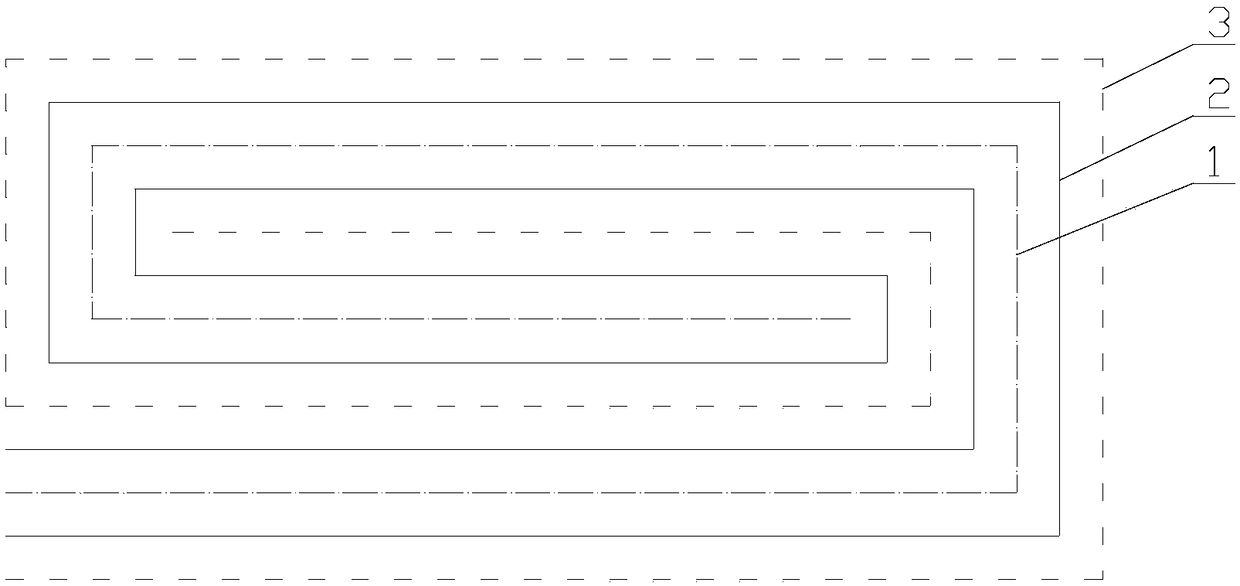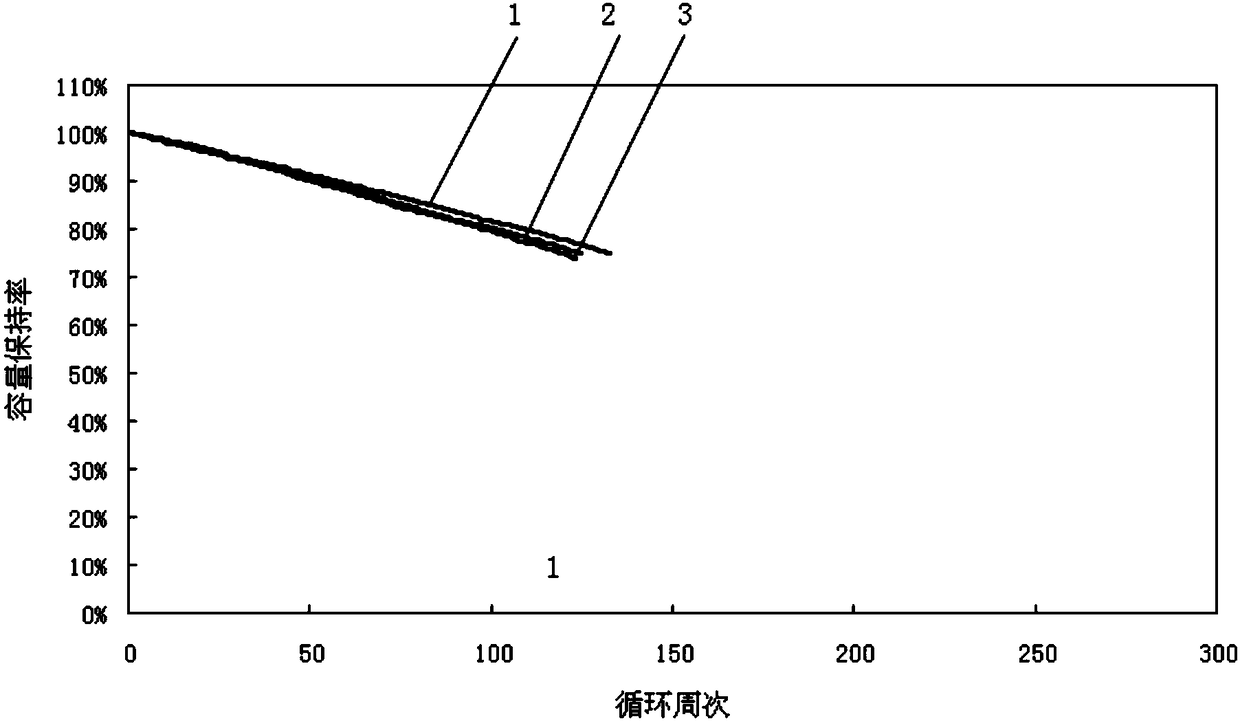Lithium-ion battery with high energy density and preparation method thereof
A lithium-ion battery, high energy density technology, applied in the direction of battery electrodes, secondary batteries, circuits, etc., can solve the problem of not being able to meet the requirements of light weight, and achieve the effect of increasing energy density, simplifying the process, and ensuring cycle life and stability
- Summary
- Abstract
- Description
- Claims
- Application Information
AI Technical Summary
Problems solved by technology
Method used
Image
Examples
Embodiment 1
[0030] A lithium-ion battery with high energy density, comprising a positive electrode sheet 1, a separator 2, a negative electrode sheet 3, a casing 4, an electrolyte, an aluminum tab 5, an aluminum tab glue 6, a nickel tab 7, and a nickel tab glue 8 . The positive electrode sheet 1 includes a positive electrode current collector and a positive electrode active layer coated on the surface of the positive electrode current collector. The positive electrode current collector is an aluminum foil current collector. The positive electrode active layer includes a positive electrode active material, a conductive agent, and a binder. The positive electrode active material is lithium cobaltate. . The negative electrode sheet 3 is a current collector of copper foil after electrolysis and calendering. The electrolyte includes lithium salt, solvent, and additives. The concentration of lithium salt in the electrolyte is 1.5mol / L. LiFSI and LiBOB are used as the lithium salt. LiFSI:LiBOB=...
Embodiment 2
[0038] The difference from Example 1 is that the lithium salt in Example 1 is changed to a two-component combination of LiFSI and LiODFB, LiFSI:LiODFB=8:2, the concentration of lithium salt remains unchanged, and the solvent and additives are not adjusted.
Embodiment 3
[0040] The difference from Example 1 is that the lithium salt in Example 1 is changed to a two-component combination of LiTFSI and LiBOB, LiTFSI:LiBOB=8:2, the concentration of lithium salt remains unchanged, and the solvent and additives are not adjusted.
[0041] image 3 The middle line 1 is the cycle performance of the lithium battery in Example 1, the line 2 is the cycle performance of the lithium battery in Example 2, and the line 3 is the cycle performance of the lithium battery in Example 3, Example 1, Example 2, Example 2 In 3, two different high-performance lithium salts are used respectively, and the effect is basically the same. The copper foil current collector is used as the negative electrode, and the lithium battery has a certain cycle performance. The mass of the negative electrode sheet of the lithium battery prepared by Example 1, Example 2, and Example 3 is reduced, the mass of the lithium battery is reduced, and the energy density is ≥ 350Wh / kg.
PUM
 Login to View More
Login to View More Abstract
Description
Claims
Application Information
 Login to View More
Login to View More - R&D
- Intellectual Property
- Life Sciences
- Materials
- Tech Scout
- Unparalleled Data Quality
- Higher Quality Content
- 60% Fewer Hallucinations
Browse by: Latest US Patents, China's latest patents, Technical Efficacy Thesaurus, Application Domain, Technology Topic, Popular Technical Reports.
© 2025 PatSnap. All rights reserved.Legal|Privacy policy|Modern Slavery Act Transparency Statement|Sitemap|About US| Contact US: help@patsnap.com



